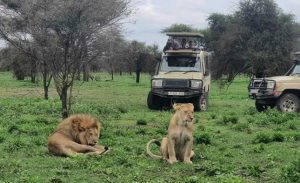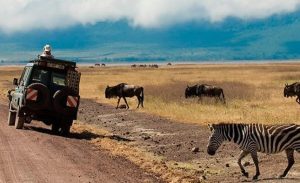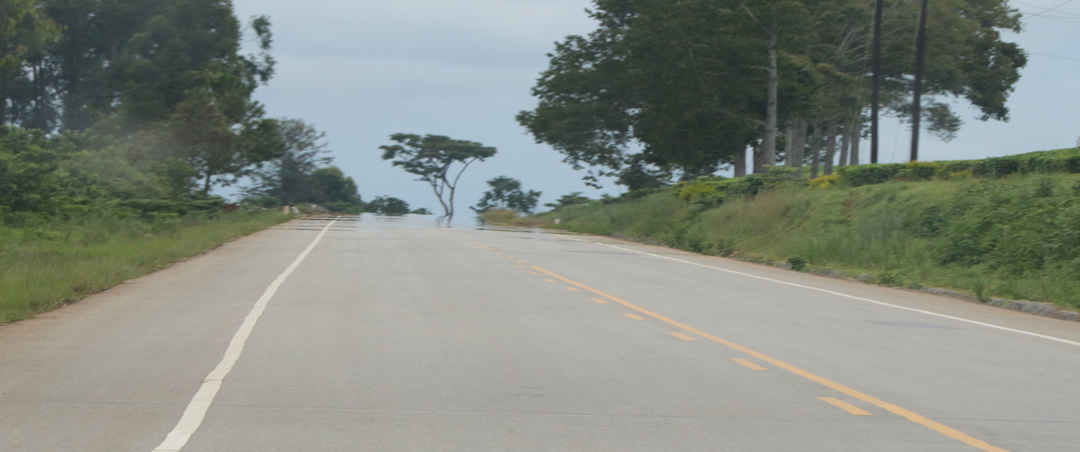Tanzania is a country in East Africa and one of the best safari destinations in the region.
Going on a safari to Tanzania is one of the most interesting and unforgettable adventures you can experience. However, it requires good preparation, as it sometimes involves discomfort and long journeys. Many of the roads in Tanzania can be quite challenging, with unpaved, potholed, and dusty roads, and the weather is typically hot.
It’s also important to remember that, despite the professionalism and knowledge of your driver or tour guide, they cannot guarantee sightings of all the animals, as these animals roam freely in their natural habitats. To make the most of your safari, plan it with a sense of humor, treat your driver well (as an unhappy driver can easily ruin your trip), and strive to get along with your fellow travelers.
For the best experience, safaris to Tarangire National Park are best organized from Arusha, while trips to Selous Game Reserve, Mikumi, and Ruaha National Parks can be arranged from Dar es Salaam.
How to get around
Exploring national parks by safari vehicle is the most common way to experience what Tanzania has to offer because walking is generally not permitted in most parks. You can either contact a safari company to organize your trip in the country or opt for a self-drive safari by renting a vehicle from any car rental agency. Having a guide is recommended to ensure you don’t miss out on the wildlife.
Most tour companies offer safaris to various destinations across the country. You can book your safari online from home or upon arrival at the tour company offices. Booking at the tour company offices might get you good discounts, but ensure the safari company is well-licensed and a member of the Tanzania Association of Tour Operators (TATO). Avoid companies offering cheap deals on the street, as these often exclude park entrance fees and can lead to disappointing experiences.
How much does a safari cost
Safari prices and durations can vary widely, but generally, you get what you pay for. Prices depend on several factors like accommodation, travel means, destinations, trip length, and group size.
For an all-inclusive safari with overnight at luxury safari lodges offering twice-daily game drives and buffet meals, expect to pay around $150 to $250 per person per day. If you opt for air transfers, the cost will be higher.
At the luxury end, staying in high-end tented camps and lodges and using air travel to visit different destinations, costs around $500 per person per day.
For budget options, a camping safari using standard campsites in national parks costs about $140 to $180 per person per day. Considering park entrance fees alone can be $50 per day, this is reasonable. These rates typically include park fees, vehicle and driver’s allowance, and food. You’ll need to bring your sleeping bag and possibly a roll mat. Some companies provide drinking water, but it’s advisable to buy enough bottles for the trip beforehand, as restocking can be difficult.
Tanzania National Parks and Attractions
Arusha National Park
 The national park is found in the northeastern part of Tanzania just a few kilometers from Arusha town and the main gate of Arusha National Park is found just 25 kilometers from Arusha.
The national park is found in the northeastern part of Tanzania just a few kilometers from Arusha town and the main gate of Arusha National Park is found just 25 kilometers from Arusha.
Ngorongoro Crater
 The Ngorongoro Conservation Area is part of the Tanzania safari northern circuit and is blessed with the best blend of terrains, wildlife, archaeological sites as well as people in the whole of Africa.
The Ngorongoro Conservation Area is part of the Tanzania safari northern circuit and is blessed with the best blend of terrains, wildlife, archaeological sites as well as people in the whole of Africa.
Gombe Stream National Park
 Gombe is the smallest national park in Tanzania, situated western part of the country in the district of Kigoma on the banks of Lake Tanganyika.
Gombe is the smallest national park in Tanzania, situated western part of the country in the district of Kigoma on the banks of Lake Tanganyika.
Mwiba Wildlife Reserve
 The destinations to look out for whenever you are in Tanzania for any kind of trip. It is 505 square kilometers of privately managed Wildlife Reserve.
The destinations to look out for whenever you are in Tanzania for any kind of trip. It is 505 square kilometers of privately managed Wildlife Reserve.
Lake Manyara National Park
 This park is at the bottom of the western Great Rift Valley escarpment. ‘Manyara’ is a local Masai word for the ‘Euphorbia Tirucalli plant’ grown at the many Masai homesteads.
This park is at the bottom of the western Great Rift Valley escarpment. ‘Manyara’ is a local Masai word for the ‘Euphorbia Tirucalli plant’ grown at the many Masai homesteads.
Udzungwa Mountains National Park
 The destinations to look out for whenever you are in Tanzania for any kind of trip. It is 505 square kilometers of privately managed Wildlife Reserve.
The destinations to look out for whenever you are in Tanzania for any kind of trip. It is 505 square kilometers of privately managed Wildlife Reserve.


